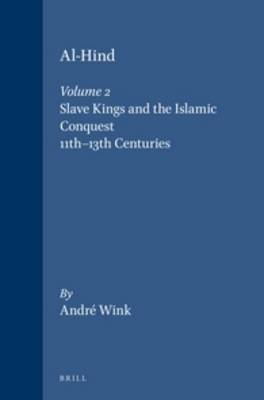Al-Hind (3 vols)
2 total works
Al-Hind, Volume 1 Early medieval India and the expansion of Islam 7th-11th centuries
by Andre Wink
Published 1 July 1991
This book is the first of a projected series of five which aims to analyse the process of momentous and long-term change which came with the Islamization of the regions which the Arabs called al-Hind, that is India and large parts of its Indianized hinterland. The series is set up in a chronological order, starting with the early expansion of the caliphate in the seventh and eight centuries and ending with the beginnings of European colonization. In this millennium of Islamic expansion five successive stages are distinguished, taking into account the world-historical context.
Each stage will be covered by a separate volume. The present volumes covers the period of the seventh to eleventh centuries, the early medieval period in which the Islamic Middle East acquires economic supremacy while establishing new links between the Mediterranean and the Indian Ocean.
Subsequent volumes will cover the periods of the eleventh to thirteenth centuries (volume 2), the fourteenth to fifteenth centuries (3), the sixteenth to seventeenth centuries (4), and the eighteenth century (5).
Each stage will be covered by a separate volume. The present volumes covers the period of the seventh to eleventh centuries, the early medieval period in which the Islamic Middle East acquires economic supremacy while establishing new links between the Mediterranean and the Indian Ocean.
Subsequent volumes will cover the periods of the eleventh to thirteenth centuries (volume 2), the fourteenth to fifteenth centuries (3), the sixteenth to seventeenth centuries (4), and the eighteenth century (5).
Al-Hind, Volume 2 Slave Kings and the Islamic Conquest, 11th-13th Centuries
by Andre Wink
Published 1 April 1997
This is the second of a projected series of five volumes dealing with the expansion of Islam in al-Hind, or South and Southeast Asia. While the previous volume covered the 7th-11th centuries, this new volume deals principally with the Islamic conquest of the 11th-13th centuries.
The book also provides an analysis of the newly emerging organizational forms of the Indo-Islamic state in these centuries, migration patterns which developed between the Middle East, Central Asia and South Asia, maritime developments in the Indian Ocean, and religious change.
The comparative and world-historical perspective which is advanced here on the dynamic interaction between nomadic and agricultural societies should make it of interest to all historians concerned with Asia in this period.
The book also provides an analysis of the newly emerging organizational forms of the Indo-Islamic state in these centuries, migration patterns which developed between the Middle East, Central Asia and South Asia, maritime developments in the Indian Ocean, and religious change.
The comparative and world-historical perspective which is advanced here on the dynamic interaction between nomadic and agricultural societies should make it of interest to all historians concerned with Asia in this period.

